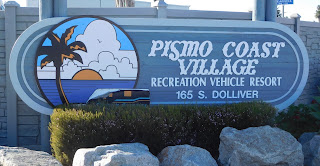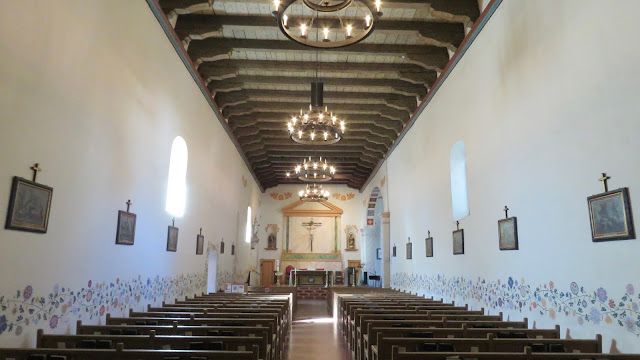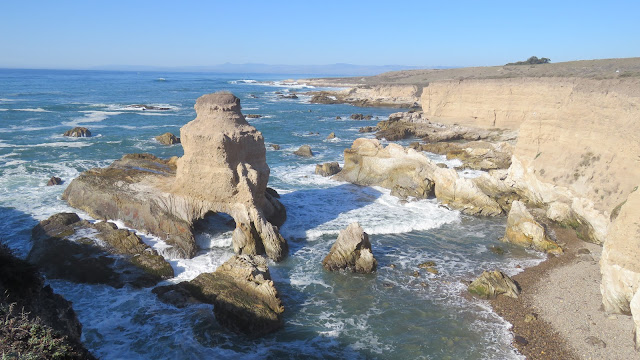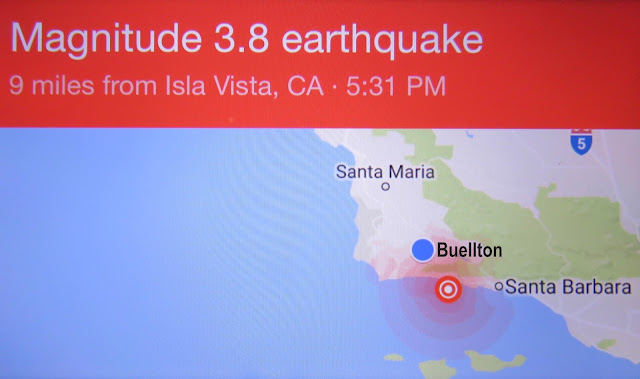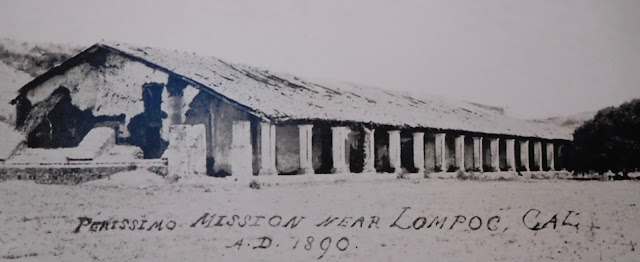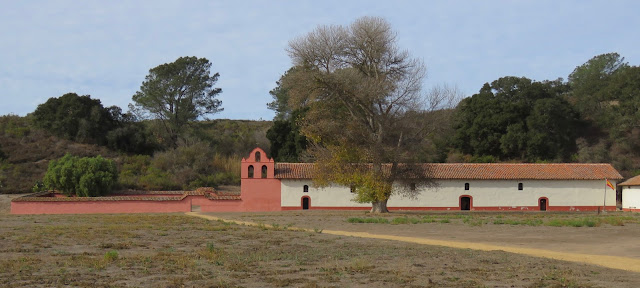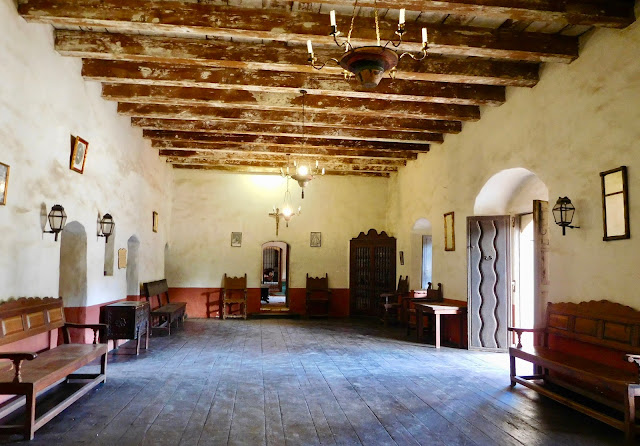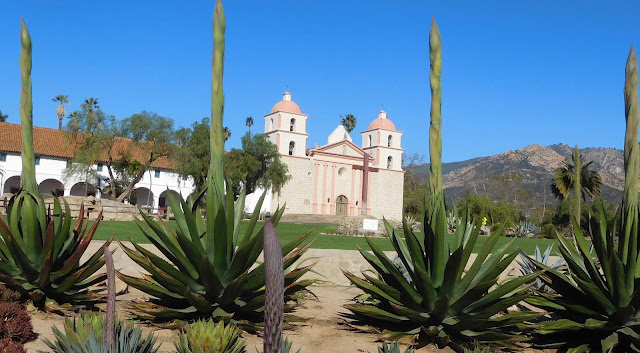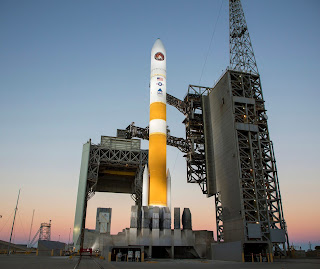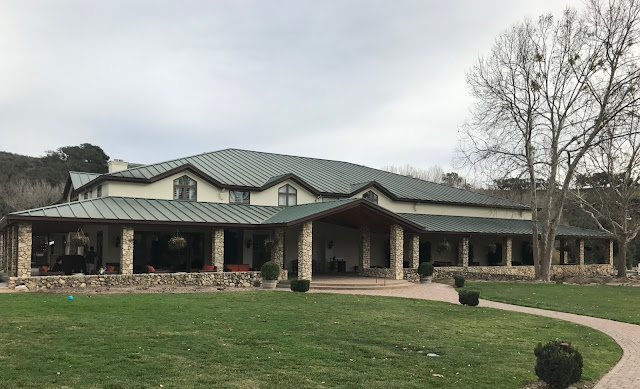where we had a sweet campsite just a few hundred feet from the beach.
Here, we hoped to get the awning topper over our largest slide repaired. Seems like the powerful Santa Ana winds last month did a number on us! On the day we packed up the motorhome, with the intention of driving over to the repair facility down the road, we had one of those dreaded “dead in the water” breakdowns! The motor on our longest slide-out suddenly failed and the slide was stuck in the OUT position. There would be no moving this bus any time soon…
While we waited on a new motor to be delivered, hoping it would be the correct one and that we wouldn’t have to extend our stay, we had plenty of distractions around Pismo. Time to sing in the lifeboat!
Our daily routine became one of refreshing walks along the beach where the trail wound through unspoiled coastal dunes capped with ice plant.
Pismo Beach proper offered lots of people-watching on weekends when locals came out to unwind after a hard week at work.
Our regular walks took us past a Monarch Butterfly Grove where the monarchs had been wintering since October. There were thousands of butterflies clustered in a grove of eucalyptus trees.
We had wonderful opportunities for incredible pictures like this one showing the white underside of the monarch’s folded wings in contrast to the brilliant orange on the top of the wings.
We had to be careful to look where we walked because the monarch mating ritual consisted of the male capturing the female in the air and then dropping to the ground to complete the mating process.
While strolling late one afternoon along the cliff above Pismo Beach, we spotted a fisherman hauling in what seemed to be a pretty sizable catch. He informed us that his fish was a cabezon and that it had distinctive blue flesh that would turn white when cooked.
A variety of birdlife frequented our walks, such as:
turkey vultures having a meal,
flocks of sanderlings,
great white egrets,
and whimbrels.
It’s always neat to observe astronomic events in special places. Fortunately, from our vantage point on the west coast we were in an ideal spot to observe a much anticipated total lunar eclipse of the super blue moon in the early morning hours of January 31st. It was worth getting up way before dawn to see the spooky blood red moon during the minutes of totality.
As the moon emerged from the shadow of the earth, the partially lit moon was a sight to behold as it gently lowered in the sky at the first light of day. I caught this pic of the partially eclipsed moon suspended above Point San Luis just as the light from the lighthouse winked.
We had taken a trolley bus tour to the lighthouse a few days earlier,
From high above, we saw dramatic views of the Avila Beach piers projecting out into San Luis Bay.
The tour of the lighthouse itself was mildly interesting. Throughout our travels, one of my quirky amusements has been to contrast our present-day photographs
to historical ones from many decades earlier.
San Luis Obispo de Tolosa, number 5 of the 21 California missions, was right on the edge of the enticing small-town business district of San Luis Obispo.
Compared to other missions we have visited, the interior of the mission church was relatively plain, except for one outstanding feature—the incredible “vine of life” motif that meandered at eye level along the walls.
No two flowers were alike…
The central California coast is home to many miles of coastal sand dunes that provide unique hiking and recreational areas. Rancho Guadalupe Dunes Preserve
exhibited a more natural setting of unspoiled coastal dunes populated by abundant bird life,
which stretched over several miles of pristine coastline.
Oceano Dunes offered a more recreational experience by allowing camping
and cars on the beach!
Dinner and that special bottle of wine
at sunset was irresistible.
One of our day outings was up to Morro Bay
for a visit to Morro Rock,
along with a seafood lunch at the marina,
followed by entertainment courtesy of the harbor seals.
The Marina Peninsula Trail had a premium view of the volcanic peaks (morros) of the “nine sisters” which gave Morro Bay its name.
We have frequently gotten good tips from locals on things we should not miss while we inhabit their town as our temporary “home.” And so it was at Pismo Beach… The ranger in the tiny museum on the edge of town recommended a short hike to the beach at Oso Flaco Lake. A wooden boardwalk over the lake
offered an uncommon vantage point to observe the abundant wildlife that the ranger had told us about:
male northern shovelers,
white pelicans,
and a momentary sighting of a very shy raccoon.
The beach was deserted except for a few serious fishermen casting lines into the surf.
At Oso Flaco Lake, we were highly encouraged, for the third time, not to miss hiking at a nearby state park called Montaña de Oro (Spanish for Mountain of Gold).
We headed up to the park the next day and discovered an incredible hike that wound 2 miles along the rim above the pounding surf.
It was mesmerizing as the waves crashed ashore and spilled across the sedimentary bedrock.
The Bluff Trail along a rocky shoreline woven with inlets and arches, on a day brilliant with sun and fresh warm breezes with waves crashing into the beach below, was just like a discovery of “gold in the hills” at memorable Montaña de Oro.
UPDATE: Our new slide motor worked and we were able to head on up the coast as planned. Putting things into perspective, our trouble was truly a minuscule blip in the tableau of life that Voltaire calls a shipwreck. We were thankful for the opportunity to experience “songs in the lifeboat” on the Central California Coast.

